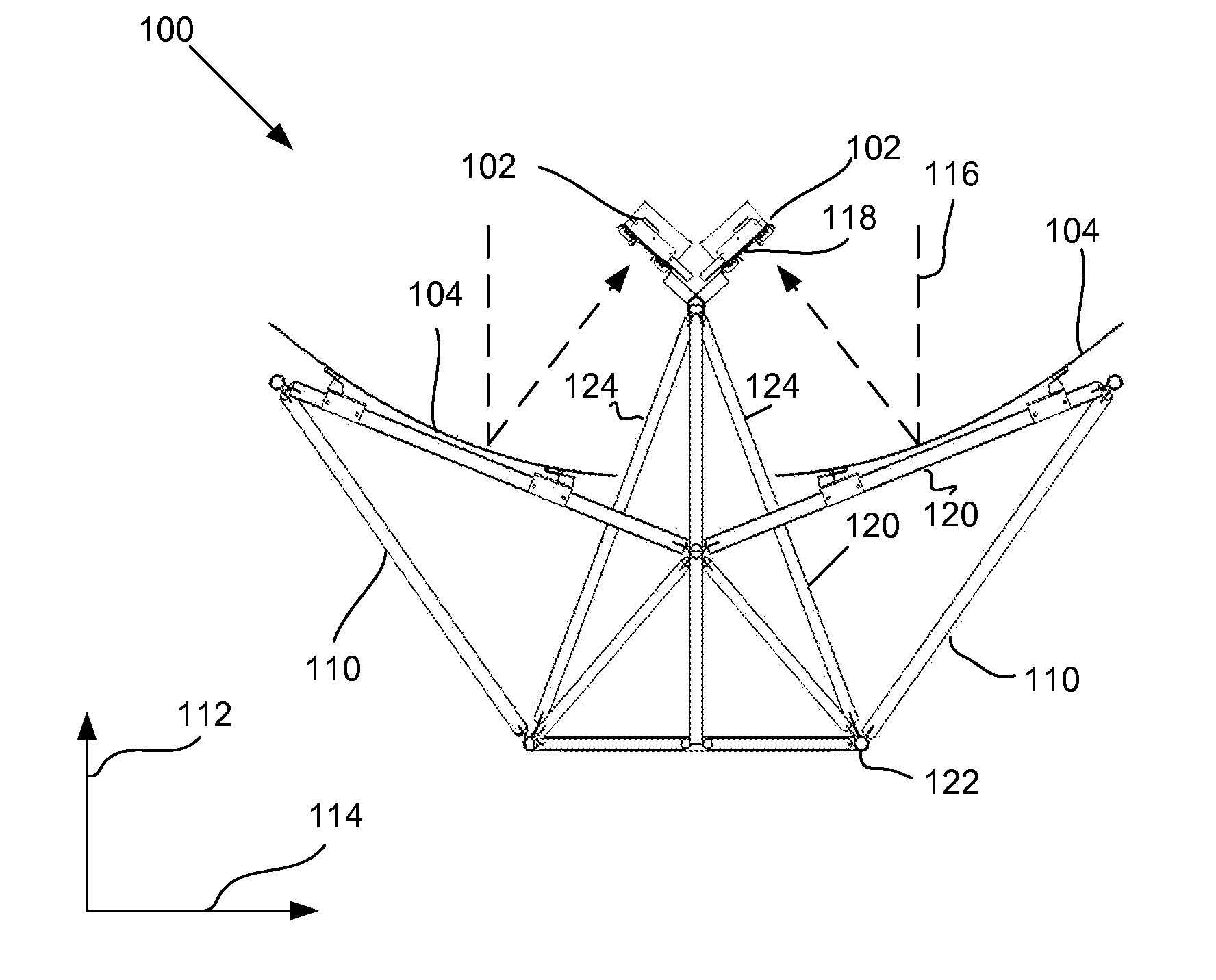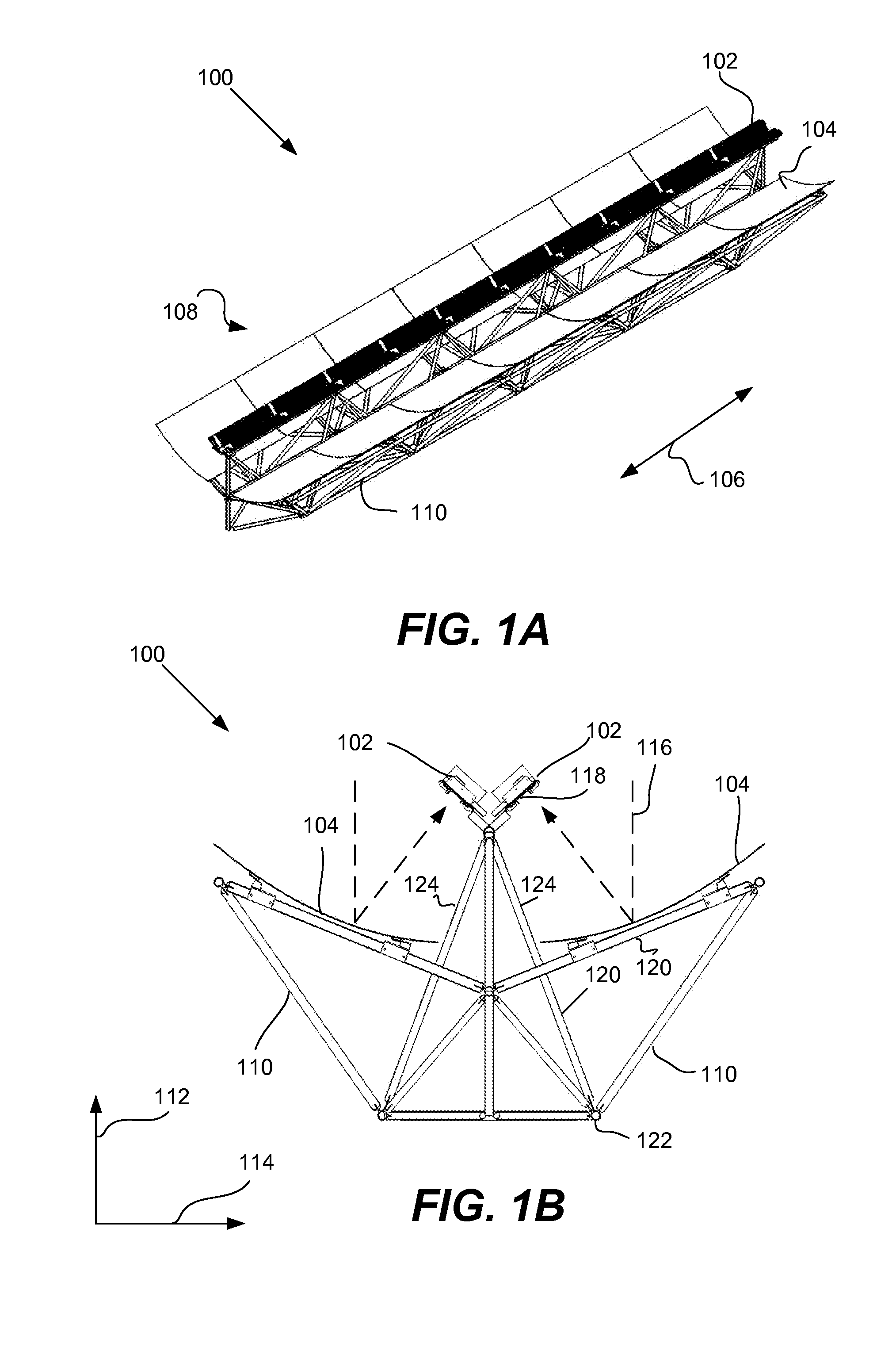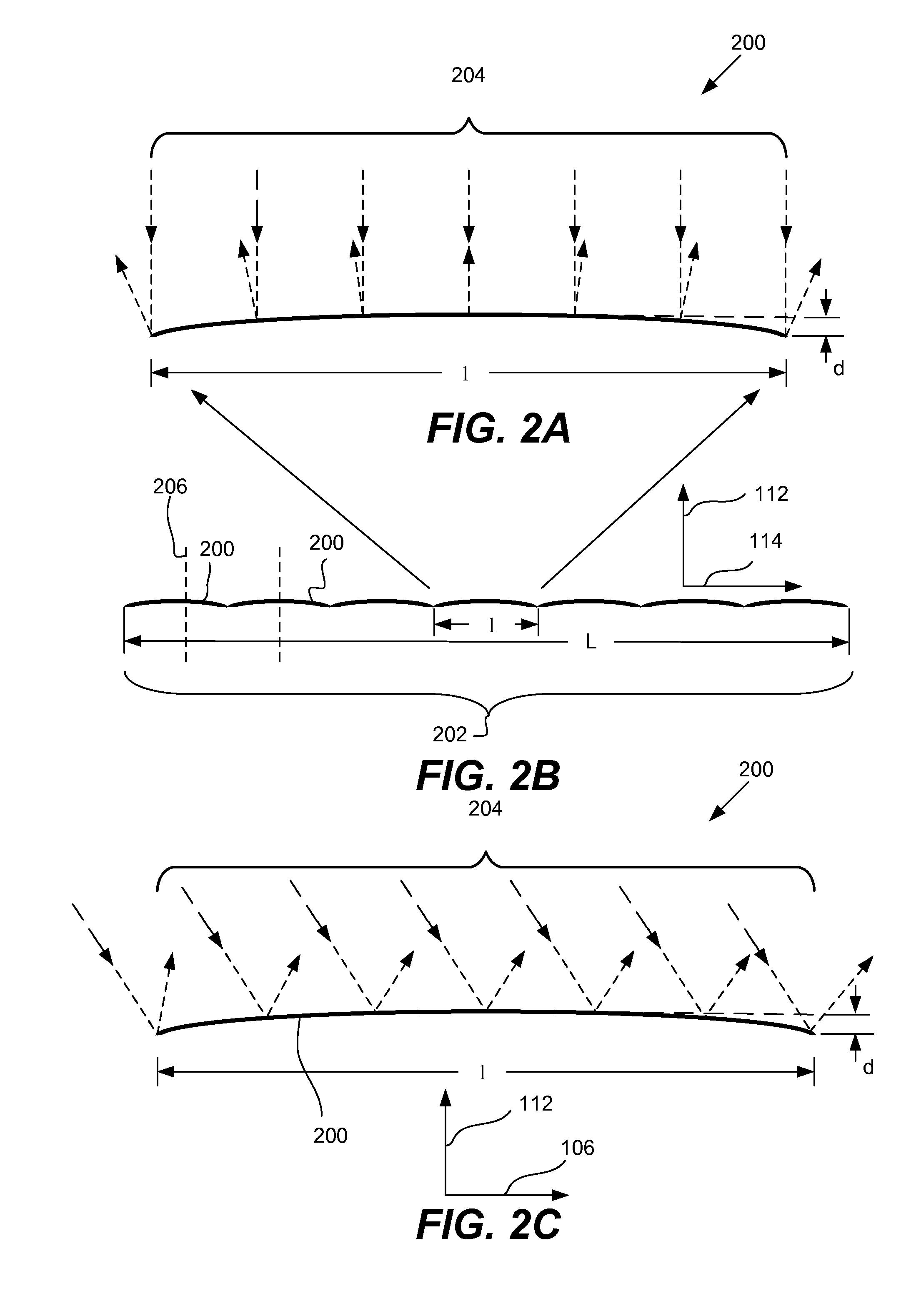Solar collector
a solar collector and solar energy technology, applied in the field of solar collectors, can solve the problems of reducing the efficiency of photovoltaic cells and non-continuous flux lines of solar receivers, and achieve the effect of reducing the efficiency of photovoltaic cells and more uniform exposure to reflected sunligh
- Summary
- Abstract
- Description
- Claims
- Application Information
AI Technical Summary
Benefits of technology
Problems solved by technology
Method used
Image
Examples
Embodiment Construction
[0025]The present invention relates generally to concentrating photovoltaic systems. The assignee for the present application, Skyline Solar, Inc., has received multiple patents related to such technologies, such as U.S. Pat. No. 7,709,730, entitled “Dual Trough Concentrating Solar Photovoltaic Module,” filed Apr. 10, 2008, which is hereby incorporated by reference in its entirety for all purposes and is hereinafter referred to as the '730 patent.
[0026]The '730 patent describes various solar collector designs that involve a trough-shaped reflector that directs incident sunlight to a string of photovoltaic cells. The described designs work well for many applications. During the course of installing, manufacturing and operating solar energy collection systems, however, the assignee has identified various areas in which the designs could be further improved. For example, ordinary wear and tear can form gaps in the reflector. This can skew the reflection of light by the reflector and ma...
PUM
 Login to View More
Login to View More Abstract
Description
Claims
Application Information
 Login to View More
Login to View More - R&D
- Intellectual Property
- Life Sciences
- Materials
- Tech Scout
- Unparalleled Data Quality
- Higher Quality Content
- 60% Fewer Hallucinations
Browse by: Latest US Patents, China's latest patents, Technical Efficacy Thesaurus, Application Domain, Technology Topic, Popular Technical Reports.
© 2025 PatSnap. All rights reserved.Legal|Privacy policy|Modern Slavery Act Transparency Statement|Sitemap|About US| Contact US: help@patsnap.com



